Japan: Part 3
The third of a three-part series exploring family, history, and travel in my return to Japan.
Sean Thor Conroe is a Japanese-American writer born in Tokyo in 1991. His debut novel Fuccboi was published by Little, Brown in 2022. He has guest edited New York Tyrant Magazine and hosts the book podcast 1storypod.
Read Japan: Part 1 and Japan: Part 2.
It’s now July, and all month I’ve been shuffling around my hot-ass apartment, restless, unable to write Part Three. Unable to remember what the initial point of it was.
It wasn’t till one night, when I finally got to organizing my space, and I found my baba’s old vest, one she made out of one of gigi’s old jackets, that I remembered. My baba would take gigi’s old clothes, once he died, and splice them up to fit her—adjust sleeves, hem legs or even nix sleeves altogether, as necessary, to make them into something she wanted to wear.
Honestly, my baba’s swag was not so unlike mine, the swag I aspire to anyhow, both gigi and baba had this old-fashioned elegance to how they dressed, gigi was always smartly suited and ascotted, whereas my baba, in her later years, favored loose-fitting button ups with the top button buttoned—a swag I might have outright, if subconsciously, stolen from her.
I remember, when I was little, how firm and angular my baba’s fingers were. I didn’t realize it then, but it was from all the seamstress work she did, professionally in her youth but privately all her life. Her ability to transform a garment from one shape into another, to infuse things fallen into uselessness with new life, a type of sartorial alchemy…
It’s not logical, that the vest helped me finally start writing this, and what it helped me remember isn’t literal. I’m not claiming anything, I’m just telling you—I put the vest on and I suddenly remember.
SAPPORO–TOKYO
On Easter Sunday evening—April 20—I see my dad and Sono off at the Sapporo airport and take the few-hour flight back down to Tokyo. Amelia will arrive Wednesday. My mom’s been down here all month. I initially think inviting Amelia out on such short notice might be stepping on our time together. But my mom doesn’t mind, she’s got her hands full sorting through baba’s belongings. So she says, anyway.
The flight down is strange. It seems to be populated exclusively by high schoolers. Maybe they’re all part of a weekend field trip they’re coming home from. I don’t know. I read the last fifty pages of Eddie’s forthcoming novel he sent me, I’d been reading it in the car on the drive across Hokkaido and back. I bust out laughing a couple times and almost wake the high school couple sleeping next to me in my row, he in the middle seat, his head back, she lying directly on his lap in a way that seems like it should be sexual but somehow isn’t. It’s sweet. On the walk from the arrival gate to the exit, I log into airport Wi-Fi and send Eddie the email I’d written in my Notes app, with screenshots of parts I liked. I feel equipped to start writing my essay now, having internalized the vibe of my editor—I’ll start writing Part One on Wednesday.
—
It’s only been ten days that I was up in Hokkaido, but things feel much different down in Tokyo than before. We’re on the other side of Holy Week. That time in the cruelest month when things move fast and unforgiving. Stepping out into the Tokyo night, the humidity is a wall. The cherry blossoms that were in full bloom the first week of April have all fallen, carpeting the glassy ponds out back the Tokyo National Museum pink. This is where my mom and I go the first full day we have together, on Tuesday, the day before Amelia arrives.
The exhibit is of Tsutaya Juzaburo, the publisher of many of the woodblock artists at the end of the 18th century, including Hokusai, the guy who painted the infamous wave-emoji wave. Tsutaya was literally a publisher, he made physical books, and had a bookstore he sold them out of, but was also, more generally, a maverick promoter and supporter of artists. These were all revolutionary happenings at the time, producing books that were so widely disseminated and discussed. Part of the reason they got so popular was that this dude Tsutaya grew up in the courtesan quarter of Tokyo, and the early books he put out were all about the daily lives of courtesans, what a courtesan does every hour of the day, a guide book of every courtesan on offer, likening each one to a different type of flower. This illicit, erotic, slightly gossipy element of the art was entirely new, as were the physical, easily replicable books that combined woodblock art—an easily reproducible process in itself—with text. Some of his painters in the late 1700s—Tsutaya died in 1797, at age 47—had their brushes confiscated and snapped in half by the government, who opposed this new strain of irreverent art.
It’s funny looking at these erotic woodblock prints with my mom, reading the descriptions, standing hands behind our backs...
“This all makes so much sense,” I say to my mom, “since this period we’re talking, 1777–1798, is also the last time Pluto was in Aquarius—that’s how long Pluto takes to orbit the sun, 250 years—and since Pluto has to do with transformation and power, and Aquarius to do with communication and revolutionary, humanitarian action, it’s a time of breaking free from old, outdated structures, when it comes to technology, art, etc—last time this meant the American and French Revolutions, and the beginning of the Industrial Revolution. So this was what Tsutaya was doing, breaking free from old artistic molds, and that’s of course what we—as of November of last year, and for the next twenty years—are going through now!”
My mom is gazing at a painting and doesn’t seem to register a thing I’m saying.
After strolling through the back paths past the cherry blossom–coated pools, through Ueno, the neighborhood the museum is in, along upscale residential streets with modern houses, small winding side streets and extravagant temples, we end up at the Yanaka Beer Hall, a beautiful spot in a converted old house at the end of a nondescript alley. My mom is adamant we find craft beer. I’ve fully exited the ascetic mode my dad had me on with all his sobriety and fitness. The spot is a bit pricey, but there’s covered outdoor seating and cool pictures on the walls. We snack on steamed Japanese sweet potato and smoked octopus and edamame. We both agree that Ueno would be an awesome neighborhood to live in.
HARAJUKU / SHIBUYA
It’s hotter than Amelia expected it to be here in Tokyo, too,. The first morning we walk to the park and immediately she realizes the shirt she’s wearing is way too warm, only the shirt she’s wearing underneath it is like a tiny tank top, too skimpy to wear she feels (or I do—I swear, I can’t remember who), though it’s also true, you don’t really see a lot of super skimpy clothing in Tokyo. But so I give her my button up to wear. And the sun is blasting, she’s not prepared for that either, and I have both a hat and sunglasses, so I give her my hat as well. She looks nice in my shirt and hat—there’s something baba-coded about this.
I wouldn’t say I was nervous, I was more curious about Amelia and my mom meeting. I wasn’t sure how they would take to each other. Neither my mom nor my two sisters, historically, have been huge fans of my girlfriends. Their assessments tended to be mysteriously unanimous, immediate, and unwavering. For whatever reason, from afar, this hadn’t been the case with Amelia, they all seemed excited to meet her. Likely, I suspect, due to my reported gripes with her consisting mostly of my not sufficiently taking care of her monetarily, emotionally, and spiritually—gripes they could all get behind. It feels slightly punitive, their collective agreement, if only theoretical, that “Amelia is good for me.”
Nonetheless, third party reports are not in-person meetings, and I could tell Amelia was nervous by how she was acting, trying and failing to start a fight for no reason…
We’d taken the train out to Shibuya around 2 PM. Amelia had stores she wanted to see, and my mom was meeting a friend in the area for the afternoon. Our plan was to link at Yoyogi Koen—Tokyo’s Central Park, a park I love and remember from previous visits—around 5. When I make the plan out loud, on speaker, with Amelia in earshot, I can see her demeanor shift. “Five, like, in three hours?”, She asks. After scoping some shops, we hit Harajuku Gyozaro, a gyoza spot I liked going to with my sister back when she lived here. This time around it feels a bit touristy, but is nice for its wraparound bar seating and limited menu—steamed or fried gyoza, those are the choices. Given we’ve got to get to the park to meet my mom, we roam in the general direction through the Harajuku side streets, which gets us a bit overwhelmed. It’s all a bit much. I’ve been pounding coffees every chance I get, so I'm all, Damn, I need to pee.
It’s at this moment when Amelia tries to start a fight for no reason.
We're in a crowded Harajuku alley when I say this, and Amelia’s all, “Why don't you go into that restaurant?” to which I'm all, “No, I'm not gonna ask some fancy restaurant if I can pee in it, I'll just find a 7-Eleven or Lawson. They all have perfectly clean public bathrooms,” confidently, since in Kasai (residential) and Hokkaido (rural) this was the case. Only here in Harajuku (extremely touristy), it evidently isn't.
And so this becomes a thing, why I won’t just go into a restaurant and ask. I've got a backpack on and all kinds of stuff dangling off it, garments of Amelia’s and my own, it’s just not a situation I want to put myself in. It doesn’t seem tactful. I’d rather pee outside. Only it stops being about the restaurant. It’s that she feels I have this skewed image of myself, of being a “crazy outside guy” and “scary to proper society,” when I’m not, I’m a nice boy, and she’s a nice girl, and she wants me to contribute to this mutual self image, our image as a couple.
I eventually find a public restroom, and we continue on our way. Things calibrate. Besides one meltdown Amelia has during a pit stop at a koi pond, where she just plunks down onto the ground like a baby, she’s good—I start shooting a video of her mid-meltdown for our “Japan documentary” we keep saying we’re making, and this cheers her up.
Walking west from the clock tower through Yoyogi park, my mom tells us about the history of the trees here. There are ginkgo trees, cherry blossoms. This park smack center of Shibuya and Harajuku used to be the training grounds for the Japanese military in the early 1900s, all the way through the end of World War Two. Then for a couple decades it served as residences for the US Military. It wasn’t till 1967 that they tore down the military housing and covered one-third of the park in trees. I sip my coffee and take a bite of the matcha soft serve I got Amelia from the park vendor there. I can tell Amelia is a bit nervous but she hides it well. There’s a specific thrill to introducing someone you’ve grown so close with to your family. Amelia compliments my mom’s baggy swishy pants, which my mom takes well. On the far side of the park, we come across the basketball courts. I get all excited since this is where I came two decades ago, when I was 14, in full ball-is-life mode trying to make varsity. My mom makes some jokes about how I was moving back then, how obsessive I was, dribbling a ball everywhere I went, needing adamantly to find a court so I could do my 100-makes/day regiment I was on. They get a kick out of laughing at 14-year-old me. I ignore this uncalled-for bullying and snap a pic of the courts and send it to my basketball group chat—ball remains life.
The park spits us out into Shibuya, Tokyo’s premier shopping and commercial area. We approach from the outskirts, and make our way towards the infamous scramble crossing. It’s one of those things you must do when you come to Shibuya, cross the crossing, but it feels like damn half the people there have selfie sticks. The side streets surrounding it are nice though. We forge our way in to find somewhere to eat.
I don’t know how we end up where we do. My mom starts talking to someone holding a sign out front a restaurant, and he’s all Niku, saying they have good meat dishes, but when my mom asks “What about vegetables”, we get directed to some mall type place, and next thing, we’re headed up escalators to the top floor of this shopping center. A lot of the restaurants in this area are like this, at the top floor of these high rises.
We end up at this oyster bar, that specializes in oysters. Amelia and my mom say they both love oysters, I’m not a very picky eater but I don’t know about oysters. We order platters of five oysters, each from a different part of Japan. The ones from Hokkaido are alright, but the further south they get, the meatier and “creamier” they get. I have to choke down the last couple with my lemon sour I’m drinking, along with the hot sake we got for the table. They do a cool thing here where they bring this big tray of different mugs, of all shapes and materials, some are glass, others ceramic, and you choose your vessel. When my mom was ordering, she seemed to take a really long time, it felt like she and the waitress were speaking in Japanese forever, going over the menu, asking a million clarifying questions. This initially gives me a headache, I can’t understand what’s taking so long, but then I think maybe this whole scenario is stressful for my mom, too, and this is how she was coping with it—by getting really fixated on the menu and ordering. Though I’m sure she’d disagree.
My mom heads back to Kasai, and Amelia and I explore some. Shibuya is a magical place. Go there at night, it’s all lit up, just festive energy. We get cans—well, I do—and roam. We come across this six-foot tall boba tea structure Amelia gets fixated on and wants me to take pictures of her with—hugging it, greeting it. We take the Hanzomon line back to our Skytree bnb, exhausted and content.
GINZA
A neighborhood my mom recommend we explore. It’s just southeast of the Imperial Castle grounds in Tokyo’s center. We head out midafternoon after a relaxing Saturday morning of coffee—at Berth Coffee Roastery, a tiny third-wave spot that is very meticulous and excellent, if that’s your vibe, the best in Sumida City from my week of research—and exploring this mall by the Skytree, the majority of which time we spend in this tiny fish shop. All these little fishes and crabs in tanks that Amelia looks into each one of, while I film her looking inside them for our “documentary.” I put Amelia onto the 7-Eleven cream puffs last night after we got back. She was initially skeptical, but they’re absolutely fire, so light and fluffy. We nab one for the train ride out. The Ginza station is attached to and part of a big Kabuki theatre, which is cool, but as we step out onto the street, my initial impressions are mixed. It’s Saturday night, during tourist season, and it’s long blocks and big billboards and high fashion stores. Like Shibuya but slightly more ritzy, without the component of cool young people roaming. We hit the Uniqlo flagship store, initially for Amelia, before getting so overwhelmed by how packed it is—but not before she decides I need new tee shirts. I’ll wear a damn tee shirt till it’s brown and faded and tattered, and this will not do—I’m not longer the weird sketchy outside guy, I’m an upstanding citizen, my garments must reflect this. Baba would agree. It’s so insane in there though, I have to bail partway through the checkout line, possibly—allegedly—with my new tee shirts covertly in tow.
It’s not till after an overpriced dinner of sushi and kara-age chicken and lemon sours at a top floor restaurant, the kind where you place your orders on an iPad, that we roam away from the station, towards the Imperial Castle grounds. It’s around here, by the Ginza 5 shopping mall, that the roads become alleys not six feet wide, lanterns hanging and tables billowing out, bustling with folks drinking and blasting cigs and having a good ole time. We got some of our best footage for our nonexistent documentary roaming this area of Ginza. This, I realize, is what my mom was recommending.
For a nightcap we hit the Old Imperial Bar, inside the Imperial Hotel, which Amelia had been wanting to hit. It was designed by Frank Lloyd Wright, and is an architectural representation of the meeting of East and West. I’ve been to some good hotel bars but this has to take the cake. You walk up the central staircase of the vast entrance lobby and follow a hallway around the side of the building and inside it’s wood paneling and dimly lit and just immaculate vibes. The bar seats are somewhat low to the ground, but the area behind the bar, where they serve the drinks, is set even lower, such that the bartender is eye level with you. Each spot at the bar is lit by a circular spotlight from on high. I order a whiskey thing with raw egg in it, and Amelia orders a blue thing. I’ve never seen anyone make a drink like this. Bro laid a towel down and put every bottle of ingredients in front of you, and then meticulously poured each ingredient in. Bro was a scientist. The attention to detail, the precision, was something truly different.
Right around the end of our drink, this white dude comes up to the bar and orders a Bailey’s. He’s all, “Hi again, yes, Bailey’s again”, nodding. Somehow we get to talking. Turns out he also lives on the upper east side. Back in Hokkaido, the news was all about Japan’s rice shortage, the prices of rice were hiking and this was causing mayhem. Only, the farmers needed to keep the prices high to stay afloat themselves. My dad’s student was explaining this to us, translating the news that was on in the sauna.
But this dude, Buzz, is out here on behalf of America to talk to government officials about various rice farmers in California who could import mass amounts of rice to Japan. This was a contentious issue, since Japan generally has a hard cap on the amount of rice they allow to be imported, to protect the farmers. Only the situation was so dire, that they, for the first time in decades, were raising the cap. Trump was lifting the tariffs for this situation specifically. “But we have to be sensitive about how we approach it to not upset the farmers,” Buzz says, bowing and saying arigato-gozaimasu to the bartender, who comes bearing his second Bailey’s, bowing low. It seems fitting that this dude is here at this hotel, as the ambassador for the US’s increased collaboration with Japan in its rice production.
If drinks weren’t damn $35, we probably coulda drank all night with bro.
Before we leave, he joins us for a smoke in the smoking area, which I’d noticed on the way in and wanted to peep. It’s literally the size of a phone booth, it’s about the most intimate thing, all three of us standing in there, smoking, the top vent pulling the smoke up. He’s clearly a bit lonely on his work trip, and it’s Saturday night, but we’re quite drunk already so hit it as he lights up his second cig. All the train ride back, we riff like I miss Buzz, I wonder what Buzz is up to right now. Jokes aside, I should have asked him more questions about the rice situation. It was a colossal journalistic failure that I didn’t.
KANDA-JINBOCHO
On Sunday, we head out to Jinbocho, the used bookstore district, and link with Amelia’s friend from the Bali Yoga School, who happens to be out here also. He’s a ballet dancer. This is a must visit area for book lovers, even if you can’t read any of the books. There are bookshelves set into the outside of walls, with awnings over them. In precarious stacks. The most elaborate arrangements. And right when you get off the Jinbocho stop, that whole strip there is like this. I feel inspired by this monument to the printed word. But even when the books are in English, believe it or not, I’m actually not so big on spending long stretches at bookstores, they remind of all the books I haven’t written, whereas Amelia can spend hours browsing picture books, erotica. I find some Mishima prints on one floor, I lurk in there and work on Part One of my essay in my Notes app.
After, we hit this spot, Kanda Brazil, an absolutely fire cheesecake and coffee shop in an old basement. You walk down these rickety steps and this old man eventually greets you and writes your name down on a notepad. They just serve cheesecake and coffee and tea. It’s all dark wood paneling and low to the ground seating in intimate booths and even a bar area. You can order a coffee and cheesecake at the bar. Admittedly, my enthusiasm is partly because you can blast cigs in there. Nothing like an immaculate basement ambiance and a couple cigs over some coffee and top-notch cheesecake—not too sweet, impeccable—to get you going. I see a dude in there just posted solo, reading, drinking coffee, chiefing—what I’d do if I lived here. Amelia and her friend catch up on yoga stuff while I just admire the vibes.
SHIBUYA, cont.
On Monday, Amelia’s got a list of stores she’s intent on hitting back in Shibuya. I accompany her to a couple till I realize she’ll ask me what I think of every article of clothing she tries on, and won’t accept my stock, if totally true, response of “Baby you look stunning in everything.” Sensing turmoil like a bird anticipating a storm—it’s also just started raining—I search “barber,” have Amelia give me her location, and say I’ll come meet you back here shortly.
It’s on the far side of the Shibuya Crossing, a completely nondescript spot up some stairs. There’s literally a sign in all caps out front that says, If you can’t speak Japanese, we can’t cut your hair! My shit is all down over my ears though, the situation is dire, and anyway I’m fine to speak Japanese, I convince myself. I stride in there confident and take my seat in the row of seats, which has X’s between each one where you’re not supposed to sit, and then you shift up to the next spot as it becomes available. It’s exclusively older Japanese men.
When it’s my turn, I go “ano ne”—so—and then make a hair cutting motion, and then say, “wa ee desu?”—it’s okay? Bro looks at me doubtful a sec, and then goes, “shashin wa aru?”—you got a picture? “Hai,” I say, quickly googling “Men’s mid fade.” I see a side profile of a hot dude with sick fade, make it big, and show him. He nods, sits me down and gets to it.
I swear, I’ve never got a haircut like this. The attention to detail. Bro was doing scissor moves I’ve dead-ass never seen before. He did such a good job, I couldn’t believe it. Partway through, he started saying something to me, I couldn’t understand, and then he went, “Where.” And then, “From.” Aa soo, I say, telling him I’m from New York, demo, okaasan wa nihonjin desu. His eyes light up, and I say I’m born here, and my mom is Japanese. I swear that made him happy, and he started doing an even better job. What’s crazy is it cost me—astonishingly—1300 yen, which is like under eight bucks. I wanted to hug him. Back at the five-story designer consignment store Amelia’s still at, I’m feeling fly as fuck, finally presentable to go visit gigi and baba—their altars—like we’re planning to do tomorrow. Amelia adds to this sense of rebirth by insisting on buying me some new pants, the first thing she’s paid for on this entire trip lmao. “Wow baby, thank you”, I say.
This is what it’s about, you guys, it’s about collaboration. Equal give and take.
KASAI
It’s the night we’ve planned all week to go out to Kasai and say hi to gigi and baba, and for all of us, Nobu included, to go out to dinner.
From the Kasai station, we walk beneath the elevated rail, the Tozai line, to baba’s. There’s something so intimate about this area, the feeling I get walking here, like entering a preconscious dream. In a way it literally is. It’s where I lived right as my faculty of memory was forming. There are no big high rises, there’s a little open air mall, little shops, the market my baba would walk to every day to get premade food in little containers once she stopped cooking. There’s the ichi mai yen store (100 yen / dollar store), that we briefly pause at while Amelia looks at little trinkets. We pass the park I played at when I was a baby. It’s just kids coming home from school, old ladies doing their shopping, folks coming home from work. I show Amelia where my baba got hit with the bike the first time she fell. A boy was biking, looking at his phone, not paying attention. A quiet settles over everything, cars pass infrequently, it’s just folks walking and biking and the train periodically passing overhead.
And then it’s up the eleven flights in the elevator, along the familiar hall down to the end, my mom and Nobu greet us and we go into baba’s altar room and I light the incense stick and blow it out and put it into the ashes, and strike the gong and kneel and put my hands together and say Hi to baba, tell her I’m here, and I do the same to gigi, and my mom shows Amelia how and she does the same. She says Hi and nice to meet you baba. Baba smiles back at Amelia with that gentle twinkle in her eye on the altar, and then she does the same to gigi, and then mom does the same and we all stand there in the small living room for a sec, till Nobu says, “Shall we?”
It’s the same Izakaya we always go to when we’ve gone out drinking and eating with Nobu in the past, right by the station. He’s made a reservation and you have a private table with the seats that are floor level and your feet dip down below it, and there’s a button you can push and the waitress comes and reups your order. This is how it’s done here. You drink and order small dishes and order more dishes and more drinks as you wish. Nobu initially proposes we order a whole bottle of whiskey, he looks at me and asks if I want whiskey, to which I say “Of course”, but my mom steps in and starts saying that’s way too much, that’s crazy, he concedes, but nonetheless we go in like no one’s business, whiskey sodas, dish after dish.
The language barrier is vast, vaster than it already is when I’m alone with Nobu, which is saying a lot, but after a good few rounds of trying the dishes and laughing at Amelia’s reactions to them, and going through the different things we’ve done, the places we’ve seen, with me or my mom translating—obviously mostly my mom, though my Japanese has improved exponentially over the month—there’s one point when my mom leaves to go to the bathroom, and we’re all pretty drunk. Amelia and Nobu have a solid discussion with just me translating. Amelia asks if he likes movies, and then whether he’s ever visited the United States, which he never has, and then she asks—all with my translation, mind you!—whether he wants to. He sips his whiskey and thinks on it, and then his eyes light up and he says he would, he’d like to go to the Rizzoli Bookstore in Manhattan, where much of the 1984 movie Falling in Love starring Meryl Streep and Robert Deniro is set. It’s one of his favorite movies. I look it up and see that it closed in 2014, but it was on 57th Street. “That’s right near where I live!” I say. “Nobu you’ve got to come visit!”
Seeing them off, I give Nobu a big hug. I don’t know when I’ll see him next. Nobu is stoic as ever though, he just pats me on the back and says, Ja ne, “See you,” and we head back, full of food, emotionally stimulated, and quite drunk. It’s only like eight o’clock though. Registering this, we realize we’ll have time to hit the sex museum Amelia has been all week wanting to hit—it doesn’t close till ten.
THE SEX MUSEUM
Hands down one of the wildest museum’s I’ve been to. A 15-minute walk north of the Skytree, down quiet streets. Totally nondescript from the outside. We’re the only ones there. A nice middle-aged lady wearing a blue beanie greets us, almost seeming surprised at our arrival. We change into slippers and she gives us a tour. There are four floors, only seemingly obliquely related. The first floor is the “VIP room,” consisting of a collection of “Laser Disk Karaoke” videos from 1985 to 2000, which are played along with other “nostalgic music,” for events ostensibly. There’s a screen for karaoke, and black velvet paintings and wax figurines on the walls arranged, so the program claims, “in order to have a presence that seems like another dimension.”
“Wild,” I say.
The top floor is the “Toba Science Fiction Future Museum,” and consists of wax figurines of variously aged women with terrified looks on their faces having what look to be scientific sexual experiments performed on them. Our tour guide explains that this is from a science fiction story that, in the plot of the story, required that these experiments be performed for the survival of humanity.
And finally, on the second floor, is the bar area, which has images and books from a freak show tent in the 1950s, where women would swallow snakes, pull snakes out of their noses. Theres’s a disco ball going, and all around you are life size “Love Dolls.” Here you can enjoy your required drink—it’s part of the admission fee—while the Love Dolls “watch quietly,” the program reads. They’re sitting upright at the bar, elevated behind the serving area facing you.
I feel like a normie bro in this space, and the two nice ladies who serve us our drinks explain the freak show images as if justifying them. Amelia is all smiles and loves it, going over and sitting with one of the Love Dolls, touching her arm and stroking her hair, on encouragement from our tour guide.
“They’re all so nice, I love them all,” one of the ladies serving our drinks says.
The last thing our guide shows is their collection of shunga, the genre of erotic art many woodblock artists made—like Hokusai did—specifically their collection of shunga figurines. Made out of porcelain and elaborately detailed, they depict women of upper classes doing normal, dignified things—sewing, resting, reminiscing—only once you lift up the figurine, there’s another side of it, what the woman is fantasizing about, being penetrated by a man, or depicting some other sexual act. In one, a man is tattooing a woman’s back, but when you lift up the figurine he’s penetrating her. In another, a woman is sitting there all innocent, but beneath the figurine she’s touching herself. Shunga means “spring picture,” since “spring” is a euphemism for sex, I learn.
I leave feeling a tenderness towards those ladies, for committing to their strange esoteric exhibit, for shedding light on things generally hidden, along with a slightly confusing mix of arousal and... I feel unnerved. Which I think was the intended effect—it’s how I’m supposed to feel.
THE BEYOND
On our final full day, we go see the Hilma af Klint exhibit at the MOMA Tokyo. I’d never heard of her, but Amelia had been wanting to go, she’s a big influence on her apparently, and when I asked my mom if she wanted to join, she hit me back with a long text containing all this research about her, saying that she, Hilma, who’s not only a painter but a spiritualist and mystic, was hugely influenced by the work of Rudolf Steiner, the Austrian occultist, architect, and thinker who founded the esoteric spiritual movement, anthroposophy, and also founded, among other things, biodynamic farming and Waldorf education—what I was raised in K-8, and what my mom is still fully immersed in, as a Waldorf school teacher in San Francisco.
In fact, my mom’s discovery of anthroposophy and Waldorf education, back when I was a baby, was the impetus to us leaving Japan—for my parents to go to Rudolf Steiner College in California, to undergo Waldorf teacher training.
In short—my mom is amped to join.
We’ve relocated to a new bnb for the last couple nights, so link there and make the walk over to the MOMA together. On the way, Amelia tells my mom about the meditation retreat she’s planning in Finland next month. Amelia, like af Klint, is a mystic of sorts, doing guided meditation and serving as a type of cryptic oracle to her followers. She also, like af Klint, does drawings and images that combine objects with text to mystical effect. She’s got two weeklong sessions planned for seven girls to come and stay and learn from her.
Active in Sweden from 1880 through her death in 1944, af Klint would, in her early years, conduct “seances” with four of her friends, where they’d meditate, assume a trance-like state and do “automatic writing” or “automatic drawing,” transcribing messages and symbols communicated to them by spirits. Various motifs such as the cross, flowers, spirals and snails she received and transcribed in those seances would go on to play a major role in her later work. Her paintings have an interesting symbolic component I’ve never seen, where it’s not so much about the demonstration of technical skill as it is about the symbolic representation of the shapes, the meaning behind them. Her work reflects her attempt to “rediscover the primal unity” before the fall of man by “reconciling opposing binary forces such as good and evil or feminity and masculinity.” Titles of series she did include “Tree of Knowledge,” “The Swan”—which depicts a white and black swan intertwining with each other in different configurations, some peaceful, some hostile, each swan with the opposite-colored background—“Altarpieces,” and the most stunning series, “The Ten Largest,” consisting of ten wall-sized paintings that progress from “Childhood,” to “Youth,” to “Adulthood,” to “Old Age.”
In her paintings, blue represents femininity, yellow represents masculinity, and pink represents love. The exhibit is called “The Beyond.”
Given af Klint’s familiarity with theosophy, which believes in reincarnation, the program reads, “it is possible that she envisioned this series as a circular progression, with the final painting returning to the first.”
—
One of the details I got wrong in Part One of this series—that my mom was quick to point out that I’d botched—had to do with what one does with the bones in the funereal urn. I wrote that, after the cremation, the bones and ashes are brought home and kept in the altar. This is incorrect; or rather, it’s partially true: they’re kept there for 30 days after the funeral. After this period, the bones are in fact buried, and the temporary altar is replaced with a permanent one.
It’s the last day of April, and the burial is set for May 5.
When I learn this, I want to extend my flight and stay longer for it. Amelia does, too—she doesn’t want to leave Japan. But the funeral is the primary ritual, the burial is mostly a hassle of having to deal with the funeral people, my mom claims, plus Golden Week is approaching, where everyone has work off and travels to commemorate the Emperor Showa’s birthday. Bnb prices, my mom claims, will be through the roof.
So on Friday, we take the train to the airport and begrudgingly board our flight back. It’s been raining all morning, and as we pull onto the runway, it starts raining so damn hard, the runway looks like a lake. The planes stall for like two hours at least, taxi-ing in circles, waiting for it to subside. When we finally take off, it’s the worst turbulence I’ve ever experienced. We hold hands and accept our fate. It’s because baba is upset that I’m leaving, I think.
We make it through.
Still, I heard her message. Next time, I won’t wait ten years to return.




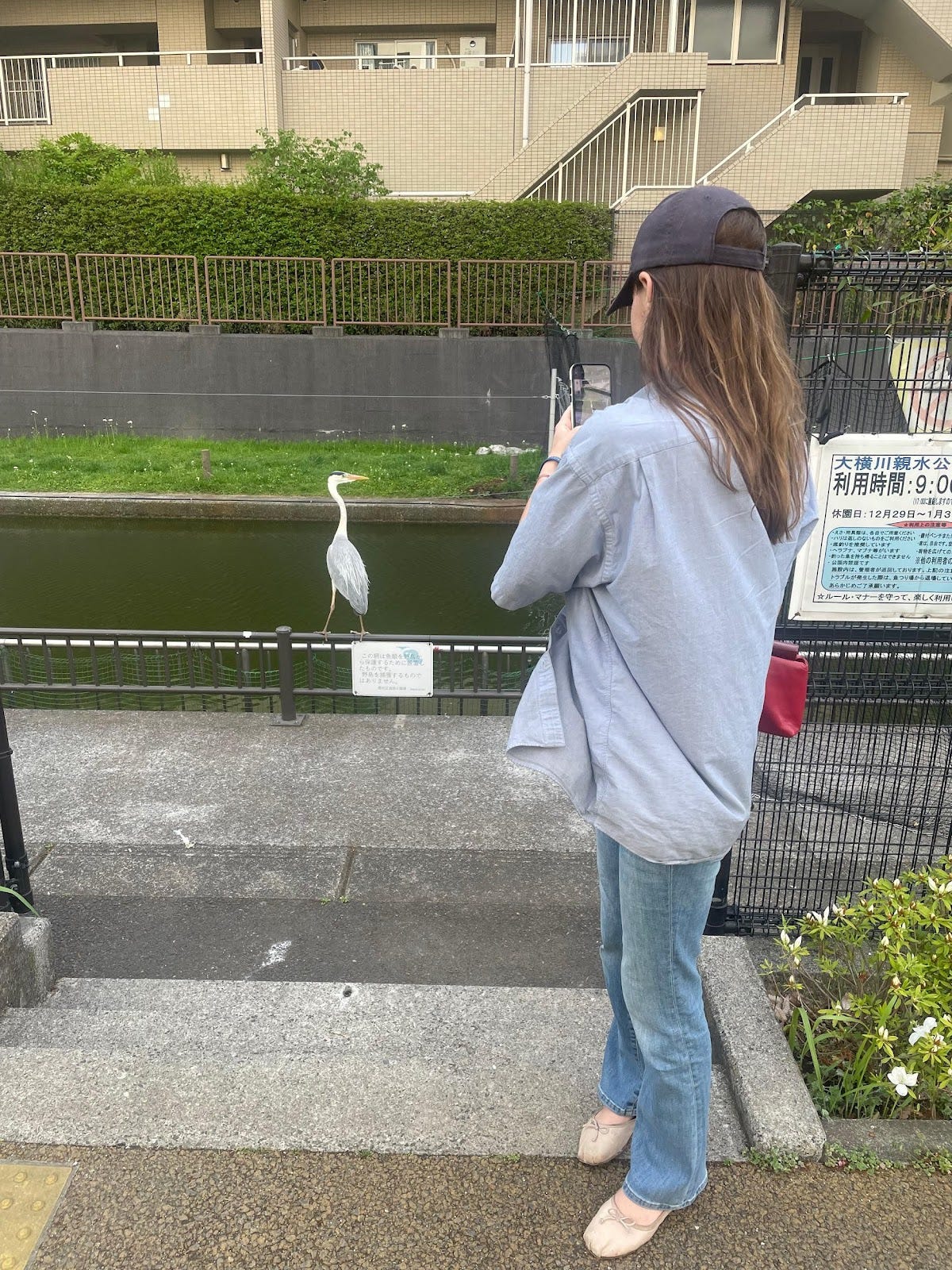
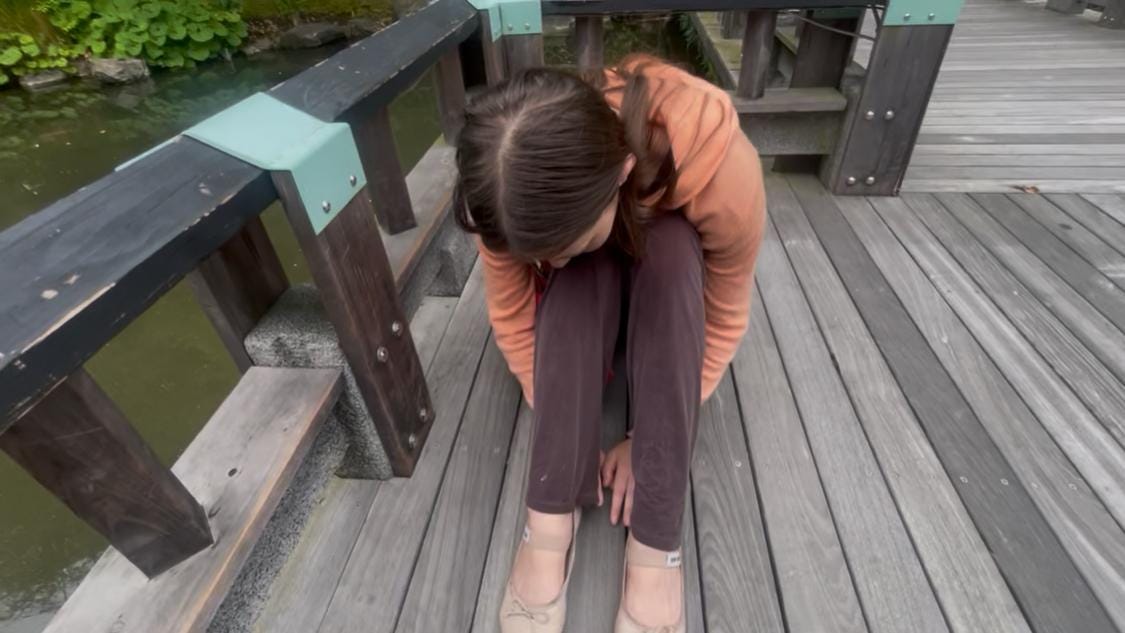
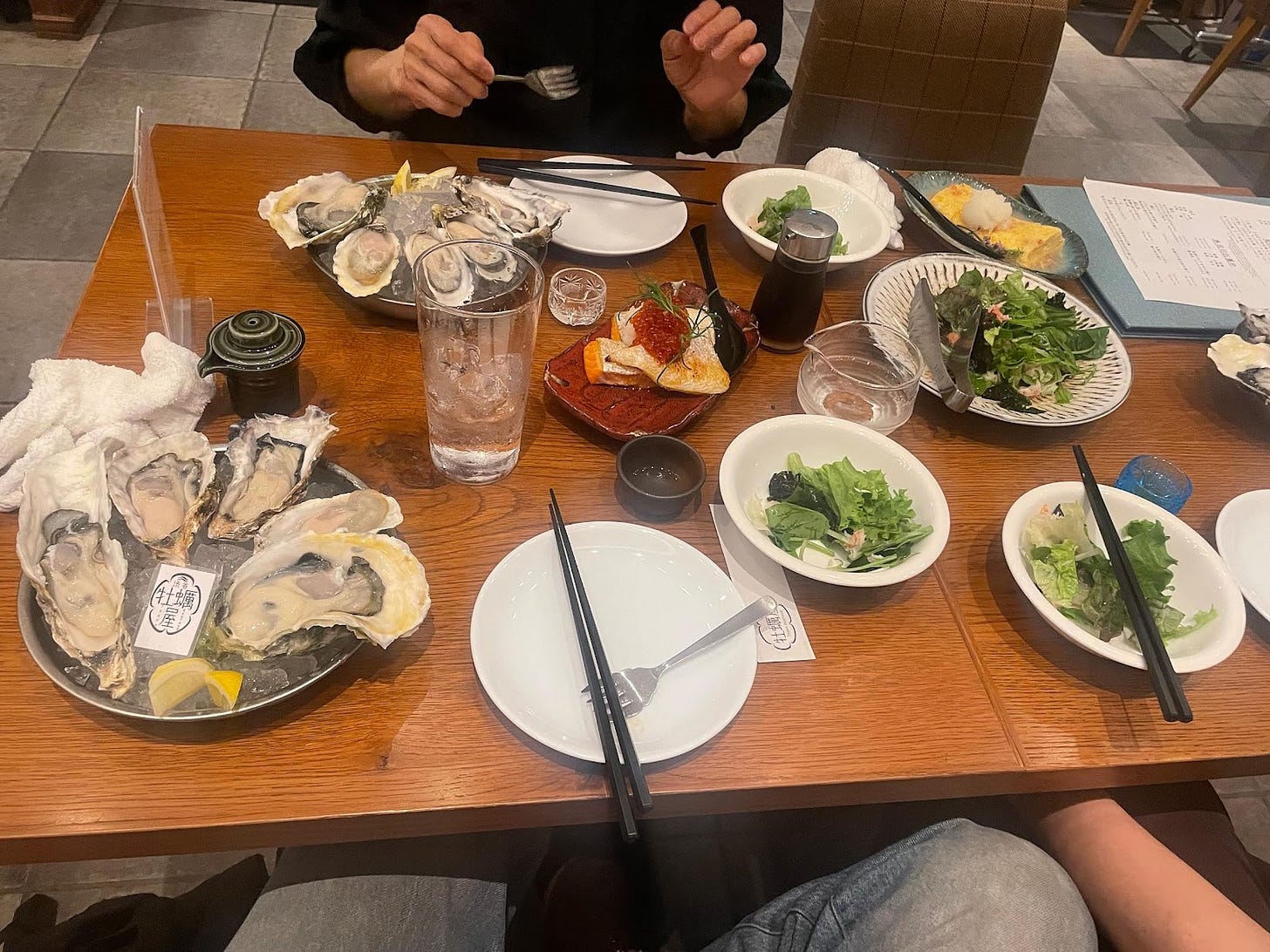
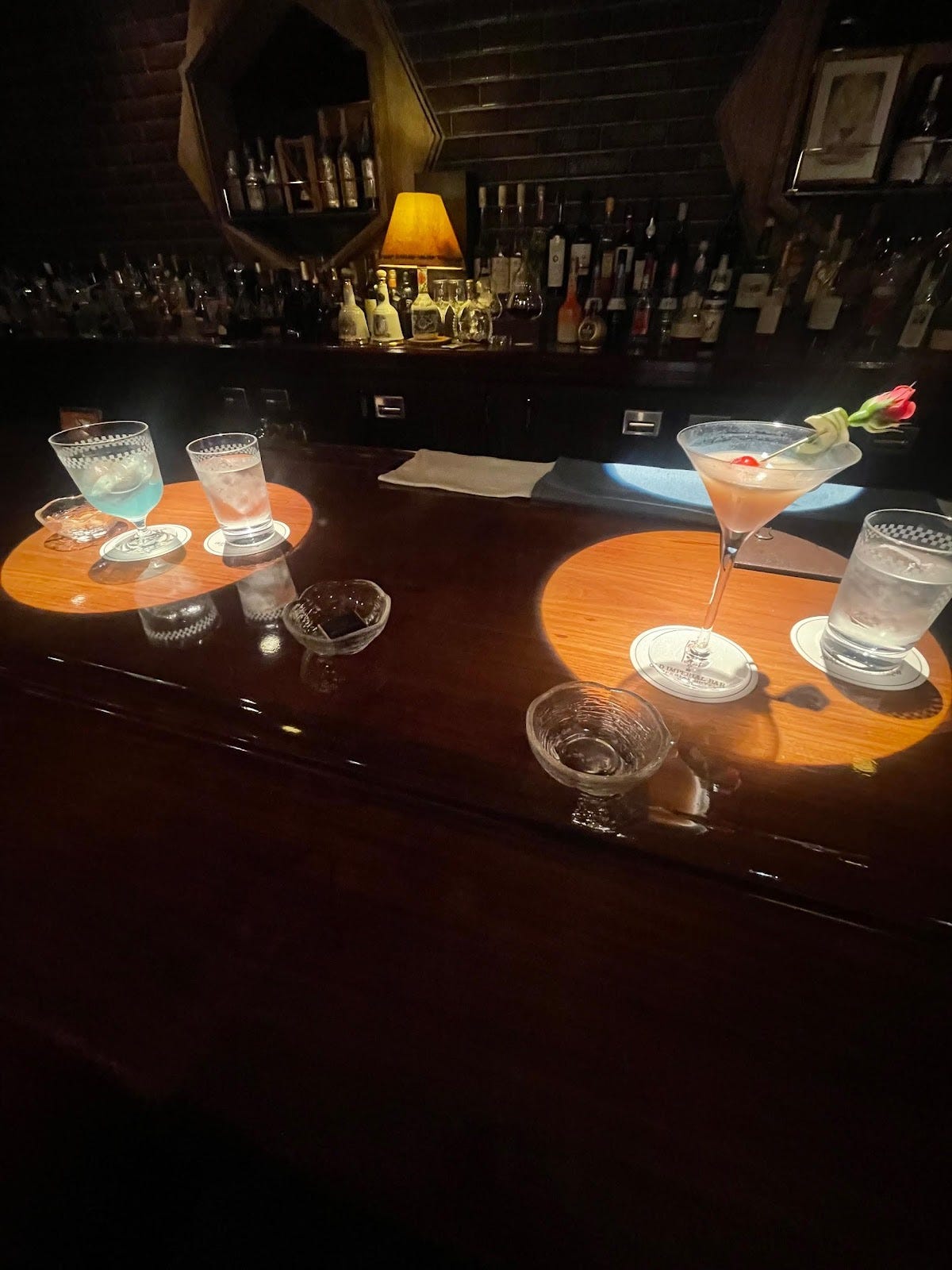
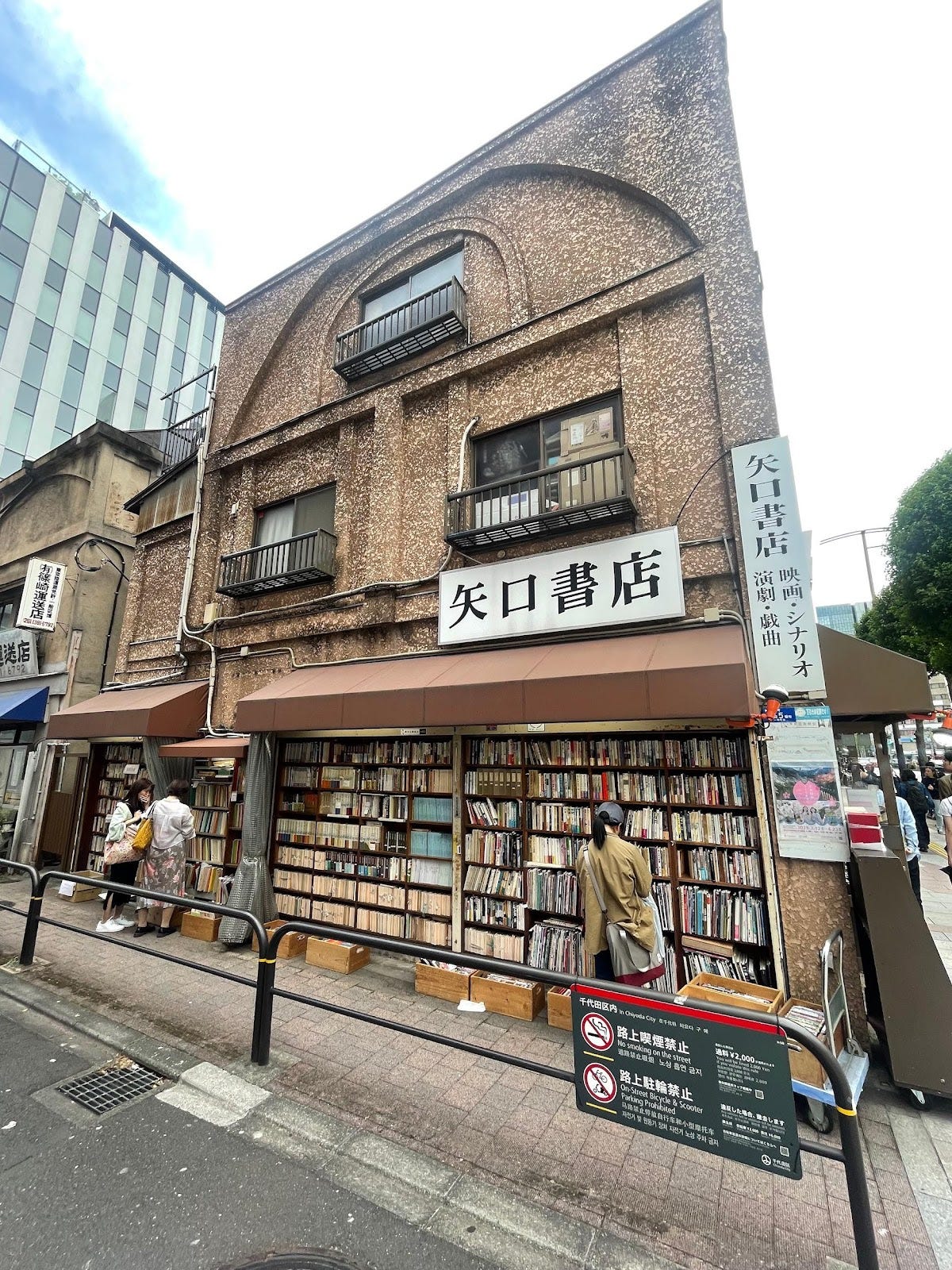
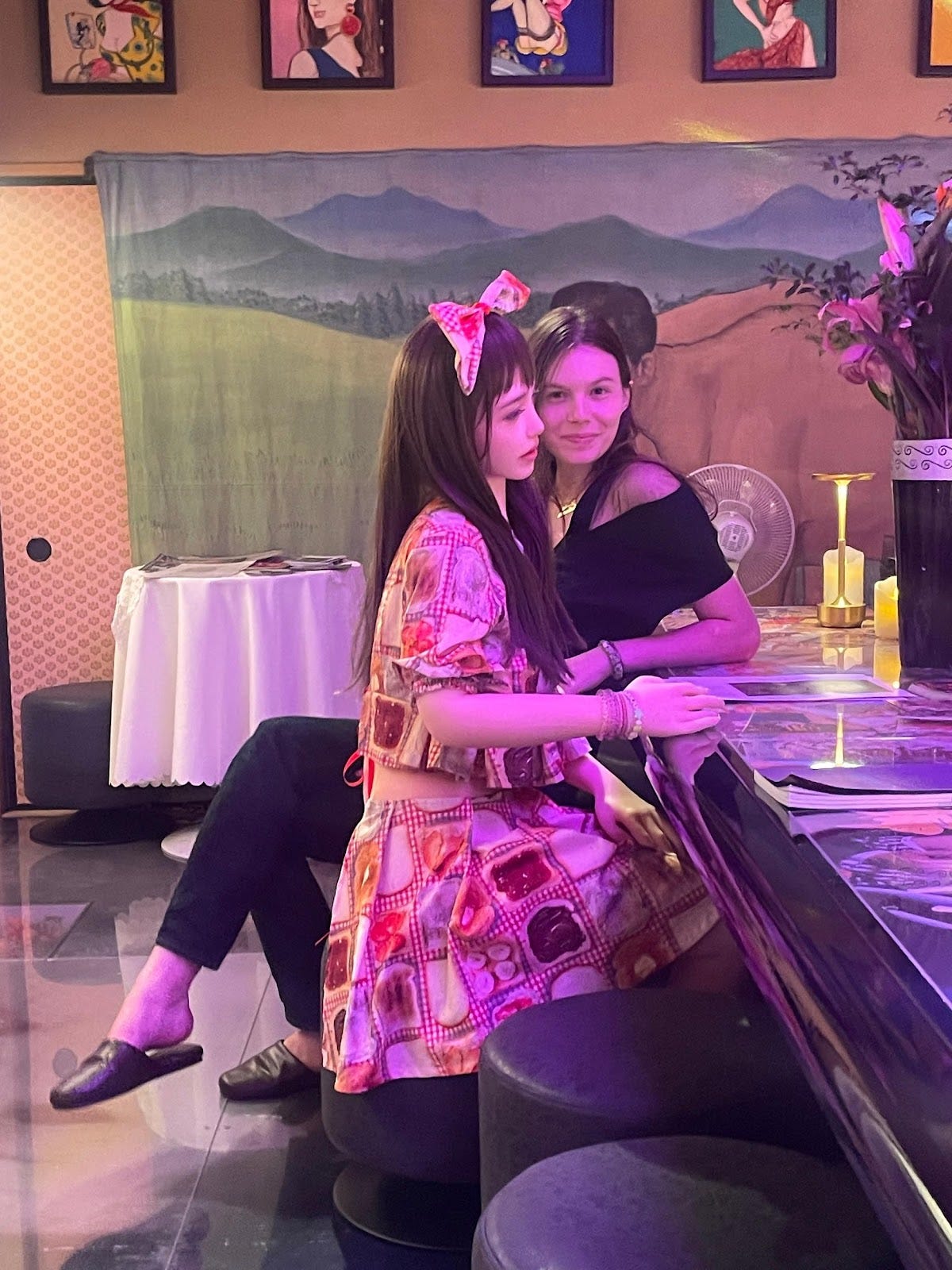
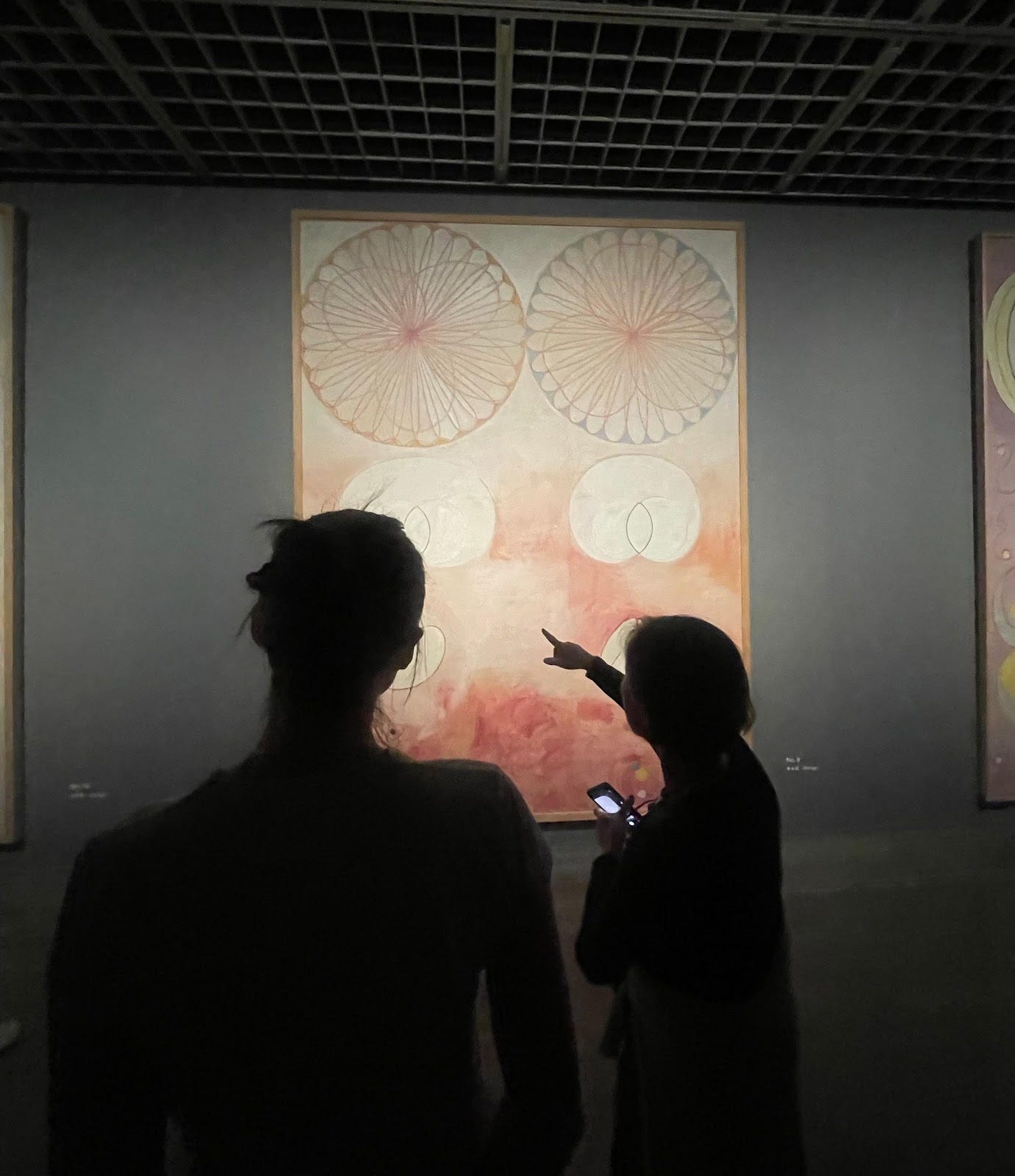

Lmao moment when gf finally paying something
love this